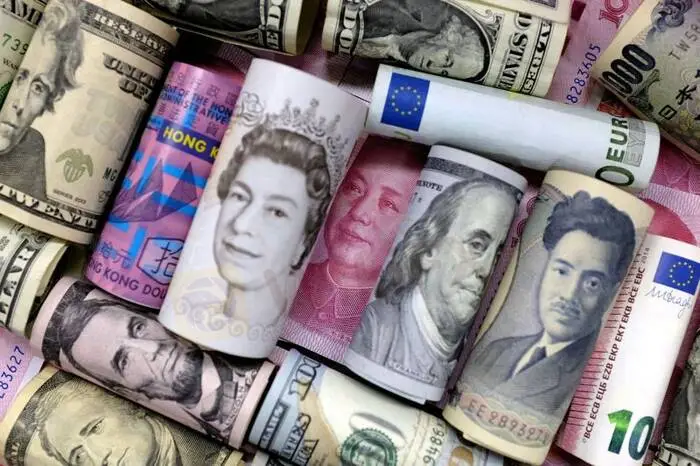简体中文
繁體中文
English
Pусский
日本語
ภาษาไทย
Tiếng Việt
Bahasa Indonesia
Español
हिन्दी
Filippiiniläinen
Français
Deutsch
Português
Türkçe
한국어
العربية
Dollar set for 5th winning week on hawkish Fed as payrolls loom
Abstract:The dollar was headed for a fifth winning week versus major peers on Friday, ahead of closely watched U.S. jobs report that’s likely to back the case for aggressive monetary policy tightening.
The dollar was headed for a fifth winning week against major peers on Friday, ahead of a closely watched U.S. jobs report that is likely to back the case for aggressive monetary policy tightening.
The U.S. currency was up for a ninth week against the yen, as benchmark U.S. Treasury yields resumed their climb – topping 3.1% overnight – following a blip lower immediately after the Federal Reserve raised interest rates by half a percentage point mid-week, placing the U.S. monetary authority at the vanguard of hawkish global central banks.
Economists predict a solid 391,000 U.S. jobs were added last month, according to a Reuters poll.

“A strong payrolls report could perversely push the market to price in more tightening as the Fed reduced its optionality at its most recent meeting,” TD Securities analysts wrote in a client note.
“That leaves a resilient USD vs EUR and yen very much the path of least resistance.”
The dollar index – which tracks the currency against six rivals – edged 0.15% higher to 103.73 on Friday, putting it up 0.48% for the week. It touched 103.94 in the previous session for the first time in two decades.
It added 0.38% to 130.665 yen, gaining 0.64% on the week, and taking it closer to last weeks 20-year peak of 131.25.
The dollar initially dropped back sharply on Wednesday, as Fed Chair Jerome Powell said following the rate hike that a 75 basis point increase is not under active consideration.
But it more than recovered those losses on Thursday, which analysts at National Australia Bank took as a sign that the retreat had more to do with positioning than any change in views.
“Powell was unambiguously hawkish,” Gavin Friend, senior market strategist at NAB, said in a client podcast.
“They will do what they have to do to bring inflation to heel,” buoying U.S. yields and the dollar, he said.
NAB revised its currency forecasts on Friday, predicting the dollar to strengthen to $1.02 per euro and $1.20 against sterling by end-September, but easing slightly to 125 yen by that time.
The euro slipped 0.13% to $1.05255 on Friday, keeping it down 0.16% for the week, but the currency has mostly traded sideways since sliding to a five-year trough of $1.04695 last week.
Sterling was flat at $1.2357, off 1.76% for the week. It tumbled 2.22% overnight, the most in two years, after the Bank of England warned of the risk of recession as it raised interest rates by half a percentage point.
Cryptocurrency bitcoin inched down 0.18% to $36,467.62, extending the 7.94% tumble in the previous session, when it touched a low of $35,579.40, a level not seen since late February. It has lost 5.25% this week.
The Aussie dollar retreated 0.26% to $0.7094, but was on course for a 0.47% rally for the week – snapping a five-week losing run – after the central bank raised rates by more than expected and signalled further moves ahead.
On Friday, the RBA drastically revised up forecasts for inflation, foreshadowing how far interest rates might have to rise to bring the countrys cost of living crisis under control.
China‘s onshore yuan rate fell sharply to a 1 1/2-year low of 6.6982 per dollar as Beijing’s pledge to double down on its zero-COVID policy hit market sentiment.
(Reporting by Kevin Buckland; Editing by Sam Holmes and Tomasz Janowski)
Disclaimer:
The views in this article only represent the author's personal views, and do not constitute investment advice on this platform. This platform does not guarantee the accuracy, completeness and timeliness of the information in the article, and will not be liable for any loss caused by the use of or reliance on the information in the article.
WikiFX Broker
Latest News
Geopolitical Events: What They Are & Their Impact?
Top 10 Trading Indicators Every Forex Trader Should Know
ASIC Sues Binance Australia Derivatives for Misclassifying Retail Clients
WikiFX Review: Is FxPro Reliable?
Malaysian-Thai Fraud Syndicate Dismantled, Millions in Losses Reported
Trading frauds topped the list of scams in India- Report Reveals
Why Do You Feel Scared During Trade Execution?
WikiFX Review: Something You Need to Know About Markets4you
Revolut Leads UK Neobanks in the Digital Banking Revolution
Fusion Markets: Safe Choice or Scam to Avoid?
Currency Calculator


